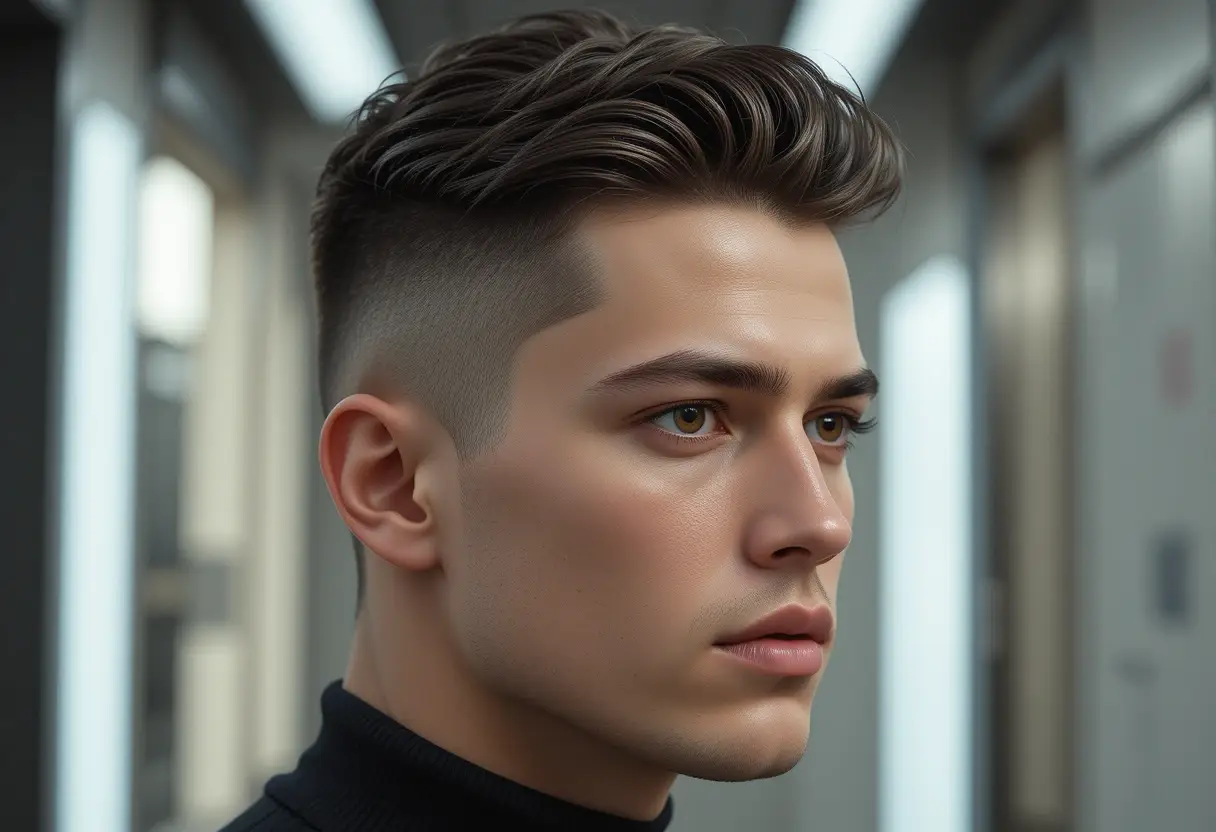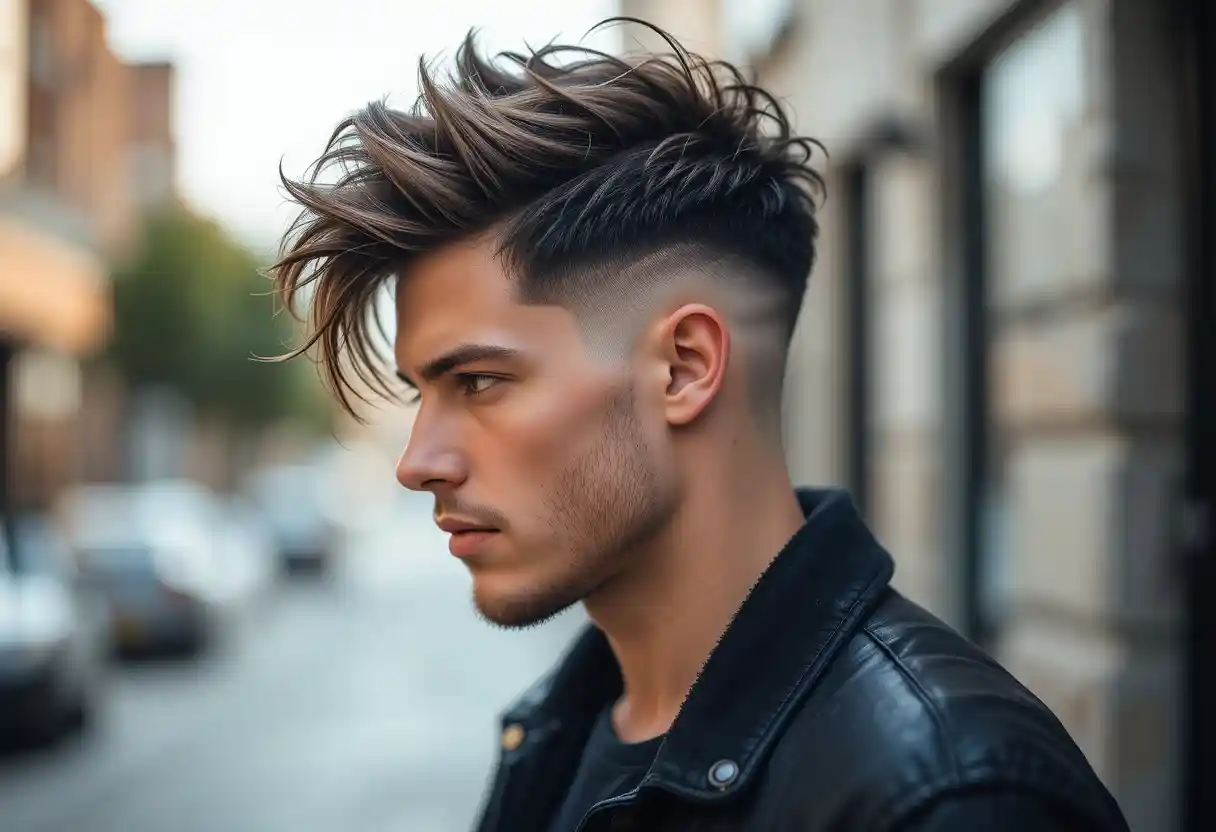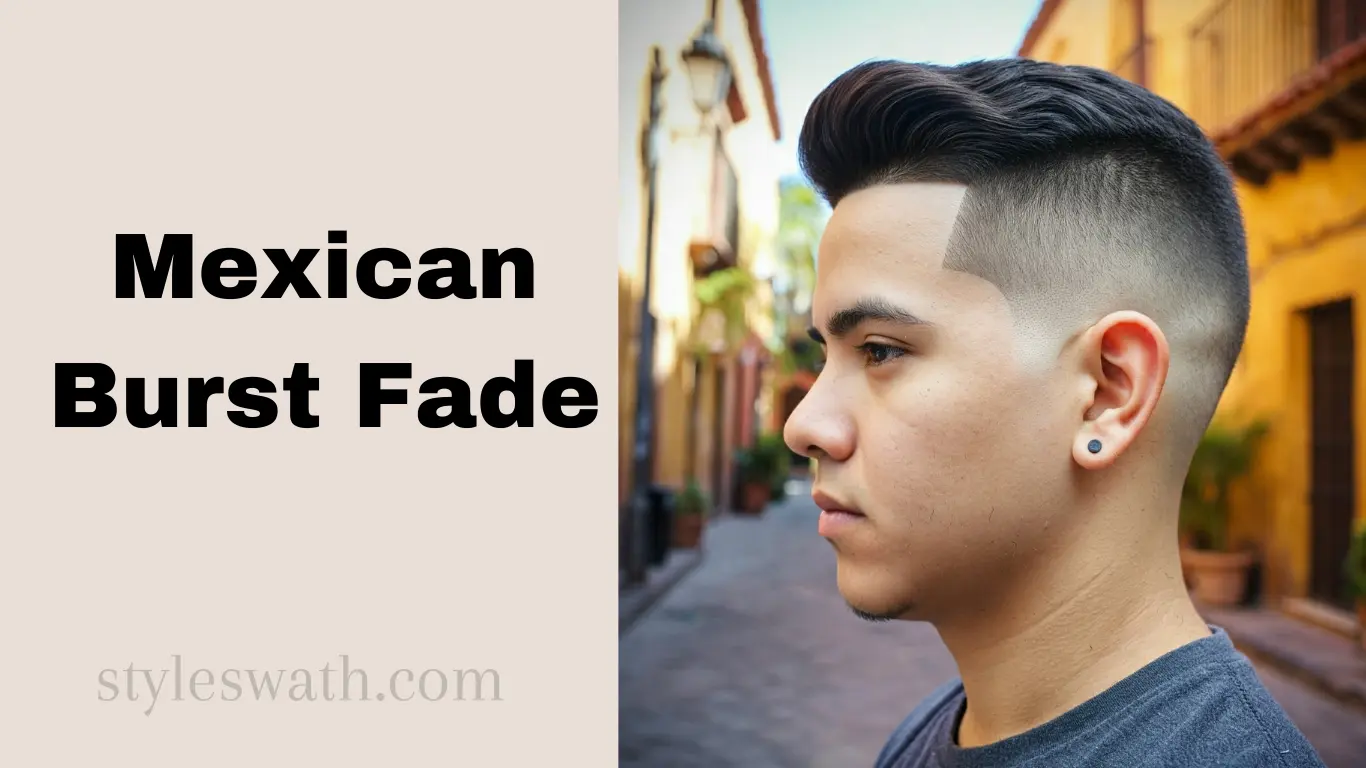Is Burst Fade and Drop Fade the Same? Key Differences
Published: 6 Jun 2025
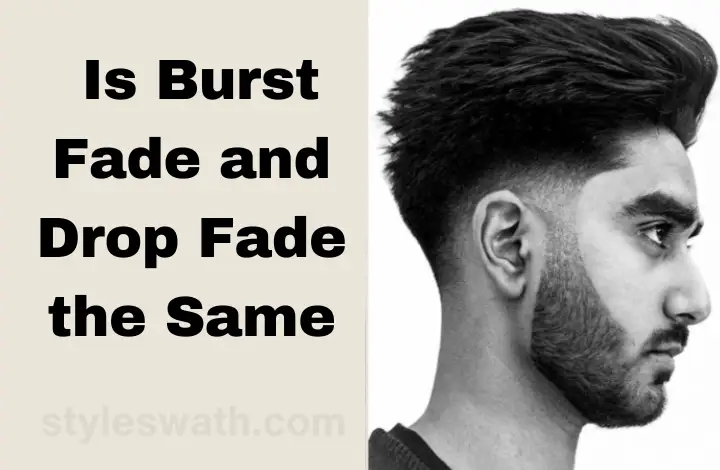
Discover the art of blending shadows and light into your hairstyle with the burst fade and drop fade—two common fading techniques used in our top-tier hair coloring services. Though they may sound similar, each technique is unique in its approach, producing different effects that cater to diverse style preferences.
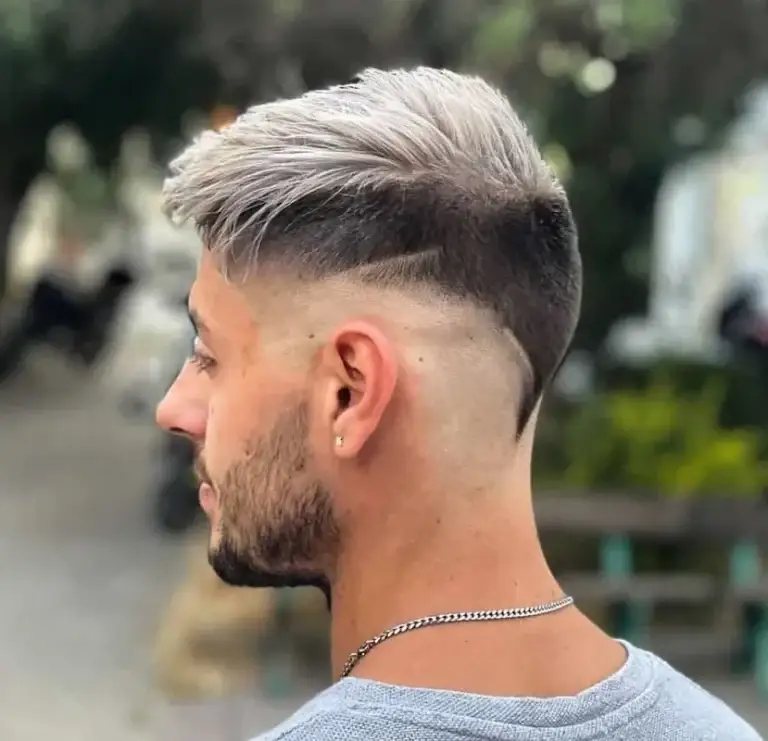
By understanding the differences between these fades, you’ll be well-equipped to decide which is best suited for your hair goals. Ready to transform your look with a fade that fits just right? Dive into the nuances of burst and drop fades and choose the best match for your hair aspirations.
What is burst fading?
Burst fading is often likened to the art of balayage in the hair coloring world; it is a technique where highlights are hand-painted on hair in a freehand application. The lightener used in burst fading is skillfully applied to create soft, diffused strips of lightness, with highlights painted in an irregular pattern, leaving strands of darker hair to add dimension. This technique creates a sun-kissed, natural-looking effect that ensures there’s no distinct line of demarcation as with traditional highlighting. Instead, the base color is softly lightened while pieces blend seamlessly with darker hair, meaning regrowth is cleverly disguised as hair grows out, eliminating any harsh line and resulting in a low maintenance look that doesn’t need to be touched up as frequently.
Drawing from my expertise, I can attest to the popularity of burst fading due to its natural-looking results and ease of upkeep. Clients adore how their hair maintains a blended, understated elegance that looks like they spent a summer soaking in the sun, rather than hours in a salon chair. The allure of a style that grows out gracefully without clear root lines is a win for those seeking a sophisticated yet low-upkeep hairstyle.
What is drop fading?
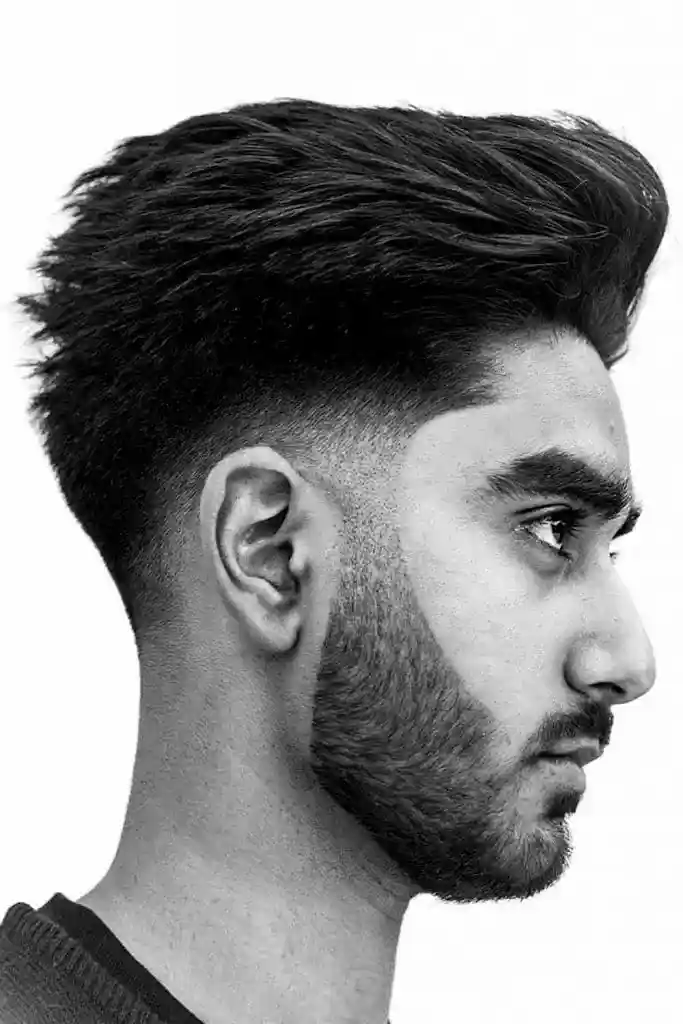
Drop fading, in the world of haircuts, is distinct from burst fading and could be seen as the hair-styling cousin of dip dyeing. Unlike the natural and blended transitions of burst fading, drop fading refers to the way a barber fades the hair more dramatically as it drops behind the ears and down the neckline. In this cut, the length at the top of the head is typically left longer and lightened gradually down to a shorter length, akin to an ombre effect. It’s called ‘drop’ because the fade has a stark transition from dark to light only at the tips, drawing a visible line that ‘drops’ from the temples. Techniques like foils may be used to isolate pieces where lightener is applied, which is quickly removed once the desired level of lightness is achieved, often speeding up the processing time compared to highlight foiling. The results yield a high-contrast look, and as the hair grows, the demarcation line becomes more apparent, requiring regular touch-ups to maintain the style, marking it as a higher maintenance choice compared to the burst.
Through numerous sessions as a barber, I’ve experienced firsthand the precise art of crafting a drop fade. The style has a boldness that appeals to clients seeking a standout look, even though it comes with the commitment of more frequent visits to keep the demarcation line sharp. Drop fading is a testimony to the client’s fashion-forward sensibility, highlighting their readiness to invest time in their grooming routine.
Key differences
Application Method
Burst fading involves freehand painting of highlights, allowing for a more organic feel, whereas drop fading typically uses foils to isolate pieces, ensuring a more defined, deliberate lightening.
Roots
For roots, burst fading lets the highlights seamlessly blend, creating a natural transition, unlike drop fading, where roots stay dark, with lightness introduced from mid-lengths to ends.
Regrowth
When considering regrowth, the more subtle approach of burst fading disguises new growth better, while drop fading makes the demarcation between treated and new hair more pronounced.
Contrast
Contrast is sharper with drop fading, showing a clear distinction between roots and ends. In contrast, burst fading offers a softer contrast that is less stark.
Maintenance
Maintenance is an essential consideration; burst fading requires less upkeep due to subtler regrowth, whereas drop fading demands more regular salon visits to keep the contrast fresh.
Versatility
In terms of versatility, burst fading can accommodate any hair length, making it a universally flattering option. Drop fading, on the other hand, is deemed perfect for those with medium to long hair lengths.
Cost
Regarding cost, drop fading may sometimes be priced lower as foiling can be quicker than hand-painting highlights. However, it’s important to note that pricing will vary from salon to salon based on the intricacy and time required for each technique.
Which should you choose?
Choosing between a low-maintenance look with a soft contrast and one that makes a more high-fashion, bold ombre statement? If the former speaks to you, then burst fading is likely your best choice, as it grows out beautifully and doesn’t require frequent touch-ups. This style works well with any hair length, making it incredibly versatile. However, if you want to make more of a statement and are prepared to book regular appointments to keep the regrowth touched up, then the drop technique might be more your pace, especially if your hair works with shoulder length or longer.
Drawing on my personal experience as a skilled colorist, I always discuss lifestyle, goals, and budget with my clients to recommend the best style for them—whether they want to give off a particular vibe or have a specific maintenance level in mind. The beauty of both techniques is that they can be customized with dimensions to suit individual tastes. The burst offers a natural, effortless edge, while the drop demands attention and asserts a polished aura.
Burst and Drop Fade Haircuts at Cutters Yard
At Cutters Yard, we take pride in ourselves on keeping up-to-date with the latest men’s hairstyles and trends. Our barbers offer a range of services, and we are adorned with an exclusive selection of Aveda Men’s haircare and styling products. We strongly believe in offering the very best to our clientele, ensuring precise, tailored haircuts that reflect both contemporary trends and the individual style of each customer. Using my extensive background in men’s hairstyling, I ensure that each cut, whether it’s a burst or drop fade, is executed with finesse and a personal touch, making every visit to Cutters Yard a cut above the rest.
Conclusion
In essence, while drop and burst fading may seem similar to ombre hair coloring techniques, they produce very different looks. Burst fading offers a soft, diffused highlight scheme with subtle regrowth, making it ideal for those seeking a beautiful, low-maintenance look. On the flip side, Drop fading stands out with a bold, defined contrast, perfect for those intent on making a statement. Anyone considering these styles should talk to an experienced colorist about lightening the lengths and ends to ensure they pick the right technique for their lifestyle. With the proper care, you can enjoy gorgeous fade effects that suit your personal aesthetics.
Which fading technique, burst or drop, causes less damage to hair?
Both methods involve some degree of damage due to lightening products. However, when executed correctly with strand tests and bonding treatments like Olaplex, damage can be minimized for both burst and drop fading.
Does one fading technique last longer than the other?
The longevity of your color depends on various factors, not the technique itself. Proper maintenance and using recommended hair care products will ensure lasting results, regardless of whether you choose burst or drop fading.
Which technique is more suitable for dark hair?
While both techniques work on dark hair, drop fading offers a more natural look with the gradual transition from dark roots to lighter ends. Burst fading on dark hair might create a harsher contrast between the light and dark sections.
Is one technique better for covering gray hair?
Burst fading is preferred for seamlessly blending away grays as it avoids distinct demarcation lines. The soft highlights disguise gray regrowth more gradually compared to drop fading, where dark roots can make gray hairs more noticeable.
Can both fading techniques be used together?
Absolutely! Combining both techniques provides dimension and customization. For instance, your stylist may suggest drop fading on mid-lengths and ends, while burst fading on roots and upper lengths, resulting in a modern balayage effect. Communicate your goals clearly to your colorist for the best outcome.

- Be Respectful
- Stay Relevant
- Stay Positive
- True Feedback
- Encourage Discussion
- Avoid Spamming
- No Fake News
- Don't Copy-Paste
- No Personal Attacks

- Be Respectful
- Stay Relevant
- Stay Positive
- True Feedback
- Encourage Discussion
- Avoid Spamming
- No Fake News
- Don't Copy-Paste
- No Personal Attacks


